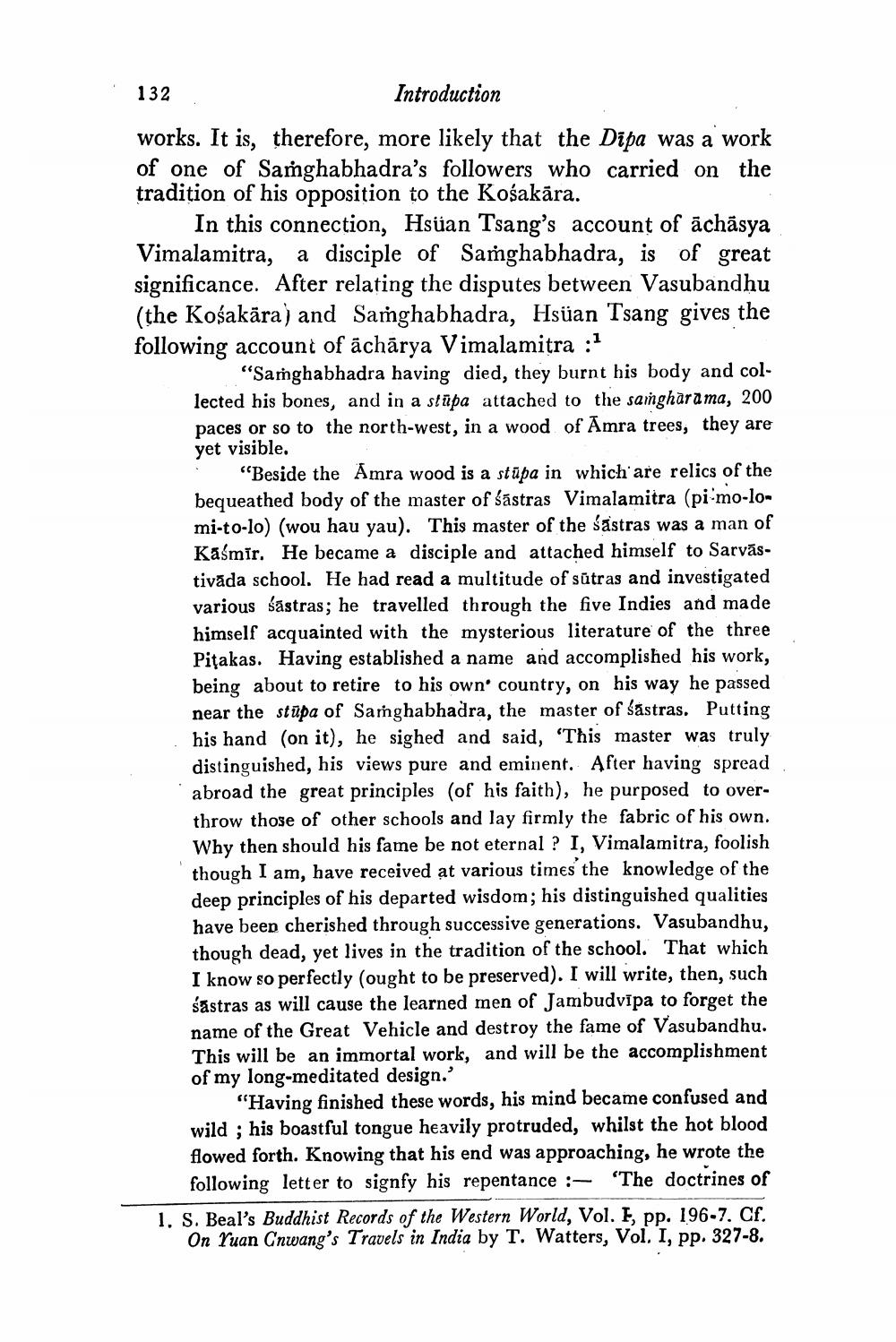________________ 132 Introduction works. It is, therefore, more likely that the Dipa was a work of one of Samghabhadra's followers who carried on the tradition of his opposition to the Kosakara. In this connection, Hsuan Tsang's account of achasya Vimalamitra, a disciple of Samghabhadra, is of great significance. After relating the disputes between Vasubandhu (the Kosakara) and Samghabhadra, Hsuan Tsang gives the following account of acharya Vimalamitra :1 "Samghabhadra having died, they burnt his body and collected his bones, and in a stupa attached to the saingharama, 200 paces or so to the north-west, in a wood of Amra trees, they are yet visible. "Beside the Amra wood is a stupa in which are relics of the bequeathed body of the master of sastras Vimalamitra (pi-mo-lomi-to-lo) (wou hau yau). This master of the sastras was a man of Kasmir. He became a disciple and attached himself to Sarvastivada school. He had read a multitude of sutras and investigated various sastras; he travelled through the five Indies and made himself acquainted with the mysterious literature of the three Pitakas. Having established a name and accomplished his work, being about to retire to his own country, on his way he passed near the stupa of Samghabhadra, the master of Sastras. Putting his hand (on it), he sighed and said, 'This master was truly distinguished, his views pure and eminent. After having spread abroad the great principles (of his faith), he purposed to overthrow those of other schools and lay firmly the fabric of his own. Why then should his fame be not eternal ? I, Vimalamitra, foolish though I am, have received at various times the knowledge of the deep principles of his departed wisdom; his distinguished qualities have been cherished through successive generations. Vasubandhu, though dead, yet lives in the tradition of the school. That which I know so perfectly (ought to be preserved). I will write, then, such sastras as will cause the learned men of Jambudvipa to forget the name of the Great Vehicle and destroy the fame of Vasubandhu. This will be an immortal work, and will be the accomplishment of my long-meditated design.' "Having finished these words, his mind became confused and wild ; his boastful tongue heavily protruded, whilst the hot blood flowed forth. Knowing that his end was approaching, he wrote the following letter to signfy his repentance :- "The doctrines of 1. S. Beal's Buddhist Records of the Western World, Vol. I, pp. 196-7. Cf. On Yuan Cnwang's Travels in India by T. Watters, Vol. I, pp. 327-8.




